219 E. Seaside Way Long Beach, CA 90802 | map |
Opened: May 24, 1925 as the Ritz Theatre, a film and vaudeville operation of West Coast Theatres. The initial film was "The Crowded Hour" with Bebe Daniels. Thanks to Joe Vogel for the opening date. He reports that the
Long Beach Press-Telegram on May 24 had an article headlined "Newly erected Ritz
Theater to open doors at noon today."
This Mott Studios photo from the California State Library collection is one of 14 cataloged as the Capitol Theatre, their set set #001385743. Note the "Ritz Vaudeville" sign. It would be swung out 90 degrees when the theatre was open. The marquee is advertising Evelyn Brent and Robert Ellis in "Forbidden Cargo," a February 1925 release.
The "For Lease" sign advises that the entire second floor was fitted out for a cafe or cafeteria. The Ritz was on the north side of the street between Locust Ave. and Collins Way. Across the street was the beach, this section in front of the theatre later developed as Lincon Park. Earlier the Fairyland Theatre had been on the site. Down the block to the west was the Victor Theatre, a house that had opened around 1914 as the Wigwam. The American was in the 100 block.
Architect: Carl Boller of Boller Bros. The building included a
restaurant, 6 stores on the ground floor and two penthouse apartments
among other spaces. The terracotta work was by Gladding, McBean. Carl
Boller had moved west to set up the firm's Los Angeles office in 1921.
Mr. Boller also designed the
Atlantic Theatre in Long Beach, the
Stadium Theatre on Pico, the Broadway in Santa Ana, the Corona Theatre in Corona, the Fontana Theatre in Fontana, the
Largo in Watts, the
Inglewood Theatre, Walker's West Coast in Santa Ana, and the
Montrose Theatre in Montrose. The firm was best known for its work in the Midwest and for the Kimo Theatre in Albuquerque.
Seating: 1,158 originally. When it was reseated in 1941 the capacity was advertised as 1,200.
Later in 1925 it was renamed the Capitol, "where the Ritz used to be." Thanks to Mike Rivest for locating this November 4 reopening ad. It's unknown why it was renamed or whether West Coast was still operating it at this point.
The theatre was repaired and remodeled after the 1933 earthquake to plans by H. Alfred Anderson. Thanks to Joe Vogel for the research. He notes:
"The 'New Theatre Projects' column of Motion Picture Herald, July 1, 1933, had this item about the Capitol Theatre: 'LONG BEACH— Capitol Theatre, 219 E. Seaside Avenue. To re-build theatre demolished by earthquake. Architect, H. Alfred Anderson, 30 Pine Avenue. Mr. Ballinger, owner. General contractor, M. H. Walter, 219 E. Seaside Avenue, Long Beach. Cost $30,000.' As the Tracy’s front clearly dated from well before 1933, the rebuilding must have been confined primarily to the interior and rear of the house.
"The Capitol was one of four Long Beach theater repair or rebuilding projects listed in the column that week, all of which must have been occasioned by the large earthquake that had struck the city on March 10. It’s interesting to note that architect H. Alfred Anderson’s address, 30 Pine Avenue, was in the Palace Theatre building, which he had designed in 1916."
In 1936 it became the
Tracy Theatre. It was taken over by Eugene V. Tracy who had operated the
Laughlin Theatre on Pine Ave. Tracy later operated the
Victor Theatre as well.
Thanks to Ken McIntyre for locating this January 1936 story for a thread about the theatre on the
Ken's Movie Page Facebook group.
A 1936 reopening ad. Thanks to Tracy Kittinger, Eugene Tracy's granddaughter, for sharing this in a post for the
Growing Up In Long Beach Facebook group. "Calling All Cars" was the stage portion of the program. The feature "Love Me Forever" was a June 1935 release with Grace Moore and Leo Carrillo.
"Call of the Wild" was out in August 1935. See two photos lower on the page that were taken opening week.
"Always 3 Features." It's a March 1946 ad located by Ken McIntyre for another post on the
Ken's Movie Page Facebook group.
A triple-feature Horror Show. It's an October 31, 1946 ad that appeared in the
Long Beach Independent. Thanks to John Bernstein for locating this
for his terrific post on the
LAHTF Facebook page that featured many, many ads for horror shows at various L.A. area theatres.
A fine program in January 1950. Thanks to Scott Pitzer for locating the ad.
Closing: The theatre closed in the early 50s and then had several years use as a church before becoming derelict. In the early 60s the Long Beach Civic Light Opera wanted to move into the theatre. They did a cleanup and a presentation in the house to stimulate fundraising but the project never materialized.
The Tracy was discussed in a February 15, 1971 article in the Long Beach Independent/ Press-Telegram. Thanks to Ken
McIntyre for locating it:
Photos by Tom Shaw that appeared with the February 1971 Independent/Press-Telegram article:
Thanks, Ken. The article and photos were part of his
Ken's Movie Page Facebook thread.
Status: The theatre was demolished in March 1974.
Interior views:
The upstairs lounge area. Beyond the columns are stairs down to the main lobby. Photo: Mott Studios -
California State Library - 1925
A c.1925 Winstead photo that appeared in the October 1983 issue of the Tom B'hend/Preston Kaufmann magazine The Console. The issue is in the Ronald W. Mahan collection. Thanks to Ron for sharing the image. That's the asbestos curtain we're seeing.
More exterior views:
1925 - A view west along the facade of the Ritz from Collins Way. Photo: Mott Studios - California State Library
1925
- Look in the upper left and you can see the roof sign of the Ritz
atop the stagehouse in front of that apartment building. The
Victor Theatre, at this point called Scott's, is down in the lower left, recognizable by its peaked roof. Thanks to
Michelle Gerdes for sharing this card from her collection.
1925
- The Ritz is over on the left in this panoramic view by Pettit's Studio looking west along Ocean
Blvd. In the center it's the
West Coast with the
stagehouse of the Mission/Fox Long Beach just behind. It's a photo in the
Huntington Library collection. Someone put a 1924 date on the image but that's a bit too early for it.
1925 - A detail from the left side of Pettit's Studio panorama with views of the original Municipal Auditorium, the stagehouse and side wall of the Ritz, and the State Theatre.
1925
- The newly renamed Capitol Theatre was offering vaudeville plus "Stage Struck," a November release with Gloria Swanson and Lawrence Gray. It's a photo in the
Los Angeles Public Library collection.
1926
- Looking east toward Locust Ave. with the Victor and the Capitol beyond. It appears that the Breakers Hotel is under construction behind the theatre. This wonderful photo by Winstead from the Historical
Society of Long Beach collection appears on the
Cal State Long Beach page about the Tracy.
1929 - Sitting without a tenant. In the display cases there are some flyers for free psychology lectures. Photo: Mott Studios -
California State Library
1929 - Offering "The Trial of Mary Dugan," a stock company presentation by the Charles King Players. The top line of their banner in the entrance says "This theatre will open Easter, Sunday matinee." Photo: Mott Studios -
California State Library 1929 - The backstage wall of the Capitol is in the center of this detail from a photo in the
California State Library collection, their item #01377828. On the readerboard of the sign atop the stagehouse: "Chas. King Players Now 'Cheating Husbands.'" The tallest of the buildings on the right is the Breakers Hotel, a Walker & Eisen design that opened in 1926.
1929 - Looking west along Seaside toward the Municipal Auditorium and the Capitol Theatre. Thanks to Ken McIntyre for locating the image for a post on the
Photos of Los Angeles private Facebook group.
c.1933 - The signage for the Capitol is visible on the far left of this fine view east toward the new Municipal Auditorium. This side of the Capitol we also get half of the sign for the Pike Theatre, later to become the Victor. The Padilla Studios photo from the California Historical Society collection appears on the
USC Digital Library website.
1936 - The first week as the Tracy. How could you not buy a ticket? Two films plus a stage show for 15 cents. This terrific photo by Winstead is in the
Los Angeles Public Library collection. In a post about the theatre for the
Lovers of Long Beach Only Facebook group Les Smaltz notes that on the back of one copy of the photo it says
"Eugenia Tracy, cashier."
1936
- A closer look at the facade during reopening week with the stage show
"Calling All Cars." The feature "Love Me Forever" was a June 1935 release.
"Call of the Wild" was out in August 1935. It's a Winstead photo in the
Los Angeles Public Library collection.
1936
- The Tracy was running "The Calling of Dan Matthews," a December 1935
release with Richard Arlen. The co-feature was "Looking For Trouble," a
March 1934 release with Spencer Tracy. It's an Inman photo. Thanks to
the Ronald W. Mahan Collection for sharing it.
c.1936
- Thanks to Carolyn Comings for this view taken from the Rainbow Pier
that was in a scrapbook of her mother. The Jergins Trust Building/
State Theatre
is framed between the Ocean Center Building on the far left and the
lamp pole. The building in the center with the ten windows all in a row
housed the
American Theatre. On the far right is the Tracy. The photo appears on the "
Long Beach Municipal Auditorium and Rainbow Pier" page of the delightful site The Pike that's curated by Paul Prosise.
c.1937 - A scrapbook page that diligent theatre sleuth Michelle Gerdes found on eBay with photos of the Tracy presenting a traveling revue featuring Major Bowes as well as shots when the stage show was the "Hawaiian Follies."
c.1937 - A closer look at one of the "Hawaiian Follies" shots from the scrapbook.
c.1937 - A closer look at one of the photos showing off the signage for radio personality Major Bowes and his amateur "Transcontinental All Star Review." One of the films the week of this photo was "A Southern Maid," a 1934 release with Bebe Daniels.
c.1937 - A view from a second page in the scrapbook showing the entrance during the week of the Major Bowes show.
c.1937 - The entrance at night, another view from the second page of the scrapbook. The seller Old Variety Store had these on eBay, which also included a bonus third page of three photos of elephants
bathing in the harbor. The set sold for $168.00. Thanks, Michelle!
1938 - A Frasher postcard from the Michelle Gerdes collection. Admission is 15 cents at the Tracy where Gene Autry is starring in one of
their features. The Victor, with its peaked roof, is down the block. The State Theatre was in the large building in the
center of the image. The
Pomona Public Library
also has a copy of the card. Their
Frasher Foto Postcard Collection has hundreds of photos from all over
Southern California.
c.1940 - A view east toward the Tracy's new marquee while some construction work was happening in front of the theatre. Norvell was perhaps a magician. "Missing Daughters" was a May 1939 release with Richard Arlen and Rochelle Hudson. It's a photo from the
Long Beach Public Library collection.
1944 - We get the Tracy in the background of this snapshot of Virginia and Charles that appeared on eBay.
c.1950 - A postcard look at the Tracy. The peaked roof and sidewall of the Victor Theatre can be seen over on the left. The Kodachrome card by Mike Roberts Studio is from the Bill Counter collection. The card's copy: "Lincoln Park, in the heart of downtown Long Beach with the Wilton Hotel as a background."
c.1950 - An image from a Frasher postcard. Thanks to Kevin Fleming for sharing it with the
Southern California Nostalgia private Facebook group. The copy at the bottom of the card said: "The Wilton Hotel - location of the famous 'Sky Room' of Long Beach, California." Kevin notes that the hotel building is now known as The Breakers.
1951 - A slide from the Ronald W. Mahan Collection looking toward the bright lights of Seaside Way and Ocean Blvd.
1951 - Here's the annotated version with the four theatres labeled that we see. Thanks, Ron!
1953 - That's the Tracy Theatre on the right in this shot taken for Life by Loomis Dean. It's on
Life Images/Google.
The occasion for the photo was
the performance of some acrobats overhead. See more views, including
shots of the Municipal Auditorium, in the
Long Beach Acrobats
set. Thanks to Noirish Los Angeles contributor Tourmaline for finding
the shot in the Life collection. This and other Long Beach views are
included in
Noirish post #35908. The former
Victor Theatre, by this time called the El Rey, is down the street.
1953 - Another photo taken for Life as part of the same shoot by Loomis Dean. It's on
Life Images/Google. Also see
another similar shot. It was a free show at the Tracy that weekend: "See Hear About Communism."
1953 - A nice shot of the Municipal Auditorium. Look down and you're viewing the roof of the Tracy Theatre. It's a photo by Loomis Dean for Life appearing on
Life Images/Google.
1955 - There's part of the Tracy's stagehouse on the left in this shot Les Smaltz shared in a post for the
Lovers of Long Beach Only Facebook group. He commented:
"Miss Canada with Miss Italy, two
beauties that were taking part in the 1955 Miss Universe contest. We can see the Breakers Hotel standing tall
in the background. They sure make lovely ornaments for the lighting
fixture."
1956 - More high wire action several years later. Thanks to Ken McIntyre for locating the photo from the Corbis agency.
1958 - We get the top of the Tracy vertical in this shot. This side of the Tracy it's a last look at the El Rey, the former Victor Theatre. The 1932
Municipal Auditorium
appears on the right. Thanks to Stephen Russo for spotting the photo as
a post on the Growing Up in Long Beach Facebook group.
1961 - A forlorn look east on Seaside Way from Pine St. that's in the Automobile Club of Southern California collection. It appears on the
USC Digital Library website. The Tracy is in the center of the image.
1961 - A detail from the Automobile Club's photo.
1961
- A street level look east east toward Pier Place with Locust Ave. the next block down. The empty marquee of the Tracy is in the middle of the image. It's another Automobile Club of Southern California
photo appearing on the
USC Digital Library website.
1961 - A detail from the Automobile Club's photo. The third building in had once been the American Theatre. That's Locust Ave. just
beyond the "Hotel" sign in the center of the image. The Victor had been
on the second lot on the other side of the intersection. Collins Way is down beyond the Tracy.
c.1970 - Thanks to Les Smaltz for locating this photo and including it in a post about the theatre for the
Lovers of Long Beach Only Facebook group.
1973 - A marquee view of the abandoned theatre from the Gary Parks collection. The photo was taken by Mary Ellen Tolson. That's Mr. Parks at age 10 in the photo. Thanks to Gary for posting this on
Cinema Treasures. The image is one that appears in "
The American Movie Palace: A Look At Its Decorative Evolution," Gary's 2021 presentation for the Niles Essanay Silent Movie Museum. It's on YouTube.
2019 - At the corner of Seaside and Collins Way, looking west to the spot where the Tracy Theatre's entrance once was. Photo: Google Maps
The Tracy in the Movies:
The
Tracy makes an appearance in H.B. Halicki's "Gone in 60 Seconds" (H.B.
Halicki International, 1974). Thanks to Ken McIntyre for the screenshot.
See the Historic L.A. Theatres in Movies post for a view of Long Beach's State Theatre from the film.
More information: See the
Cinema Treasures page on the Tracy Theatre for lots of memories and historical data from many researchers.
| back to top | Long Beach theatres | Along the Coast | Along the Coast: theatre list by address | Downtown L.A. | Westside | Hollywood | Westwood and Brentwood | [more] Los Angeles movie palaces | the main alphabetical list | theatre history resources | film and theatre tech resources | theatres in movies | LA Theatres on facebook | contact info | welcome and site navigation guide |











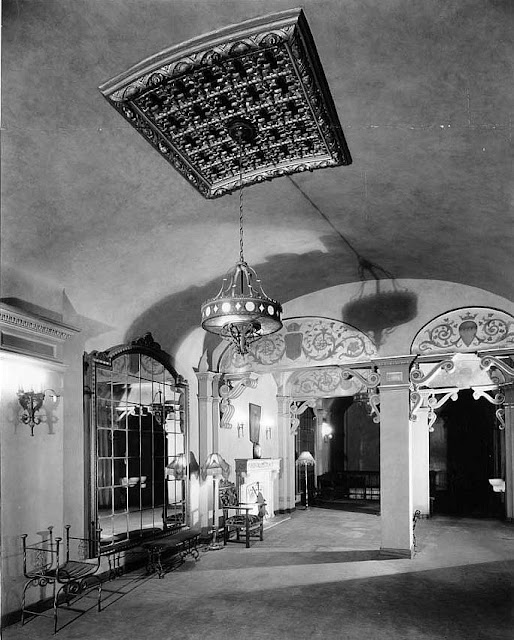






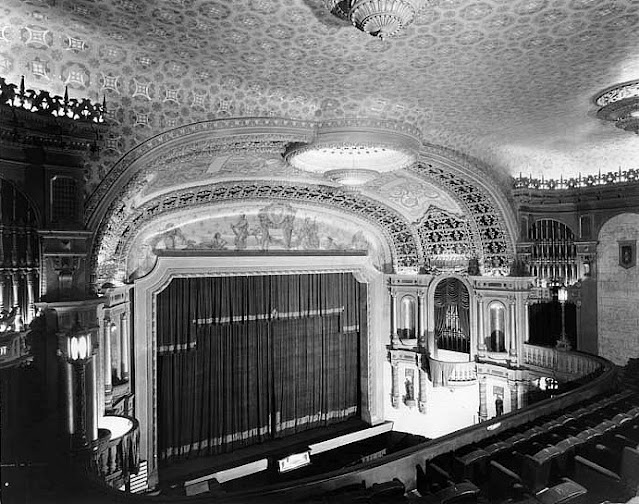










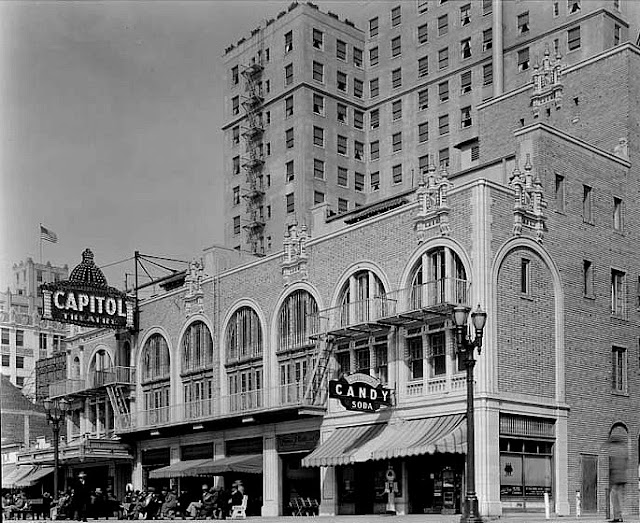








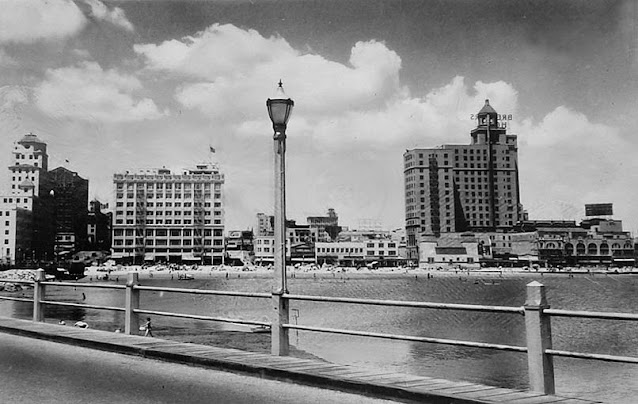
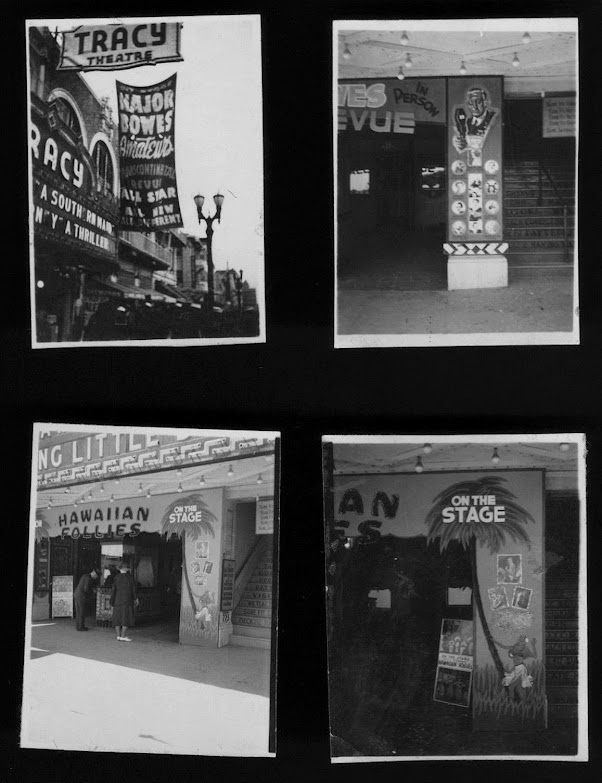
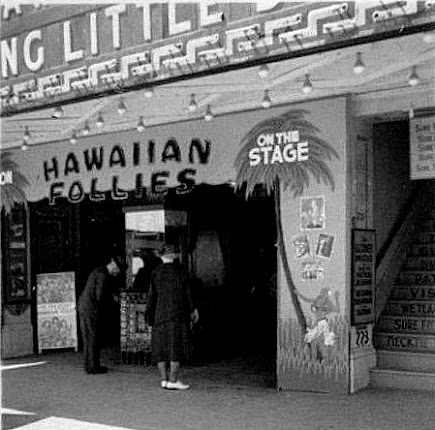

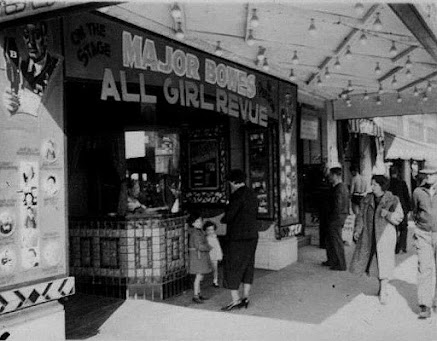





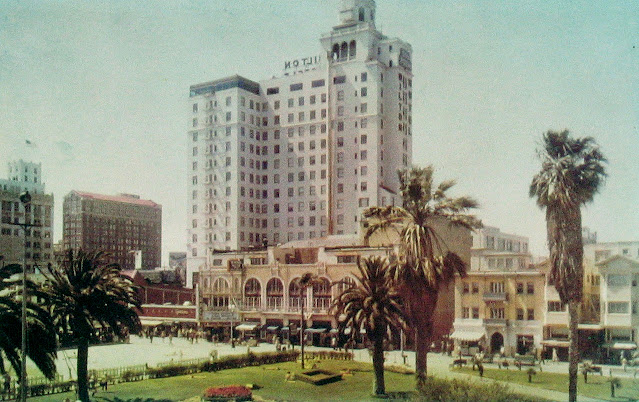




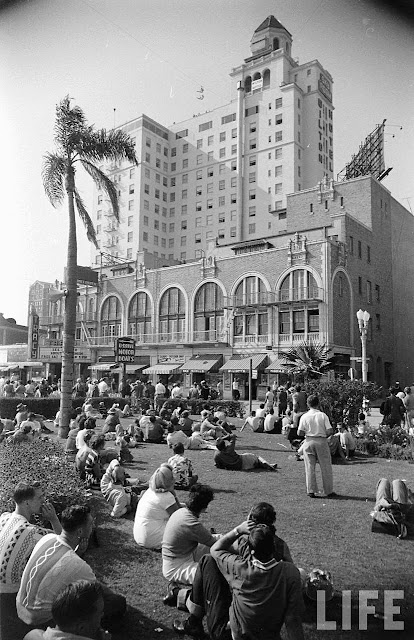








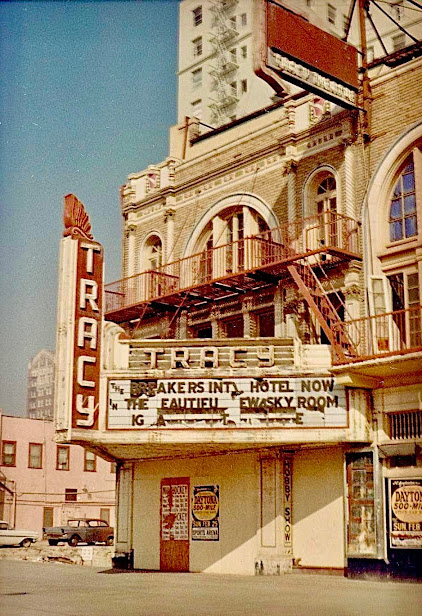

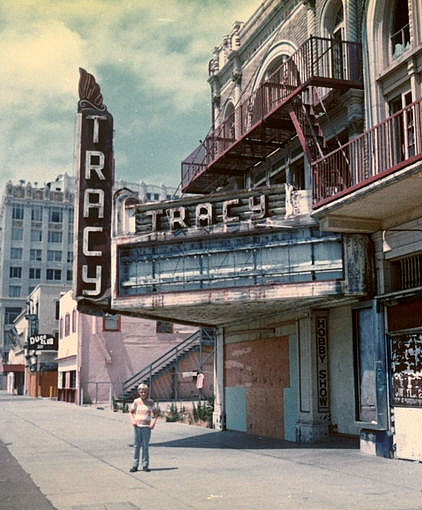


Extensive footage of Tracy, exterior and interior, in the thrilling Jan. 3, 1971 "FBI" episode from season six of Quinn Martin Productions + Warner Bros. Television one-hour, weekly drama series on ABC entitled 'Unknown Victim.' Guest stars Fabian, Lynne Marta and Tom Skerritt effectively portray an ensemble of kidnappers [the men are brothers; Lynne is Fabian's love interest] who use the long-shuttered relic -- in Long Beach, CA filling in for Newark, NJ -- as their hidden base to hold their kidnap victim [Sherry Boucher] while awaiting the ransom. Despite the decrepit look of the then 45-years old, single screen movie house, the Tracy shines as an ideal, atmospheric and photogenic location.
ReplyDeleteThanks for all the data, SC! Much appreciated.
Delete